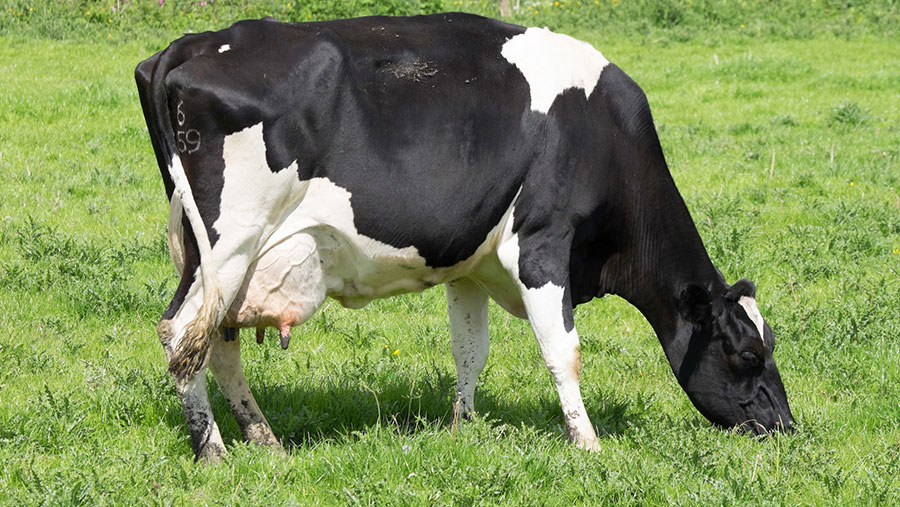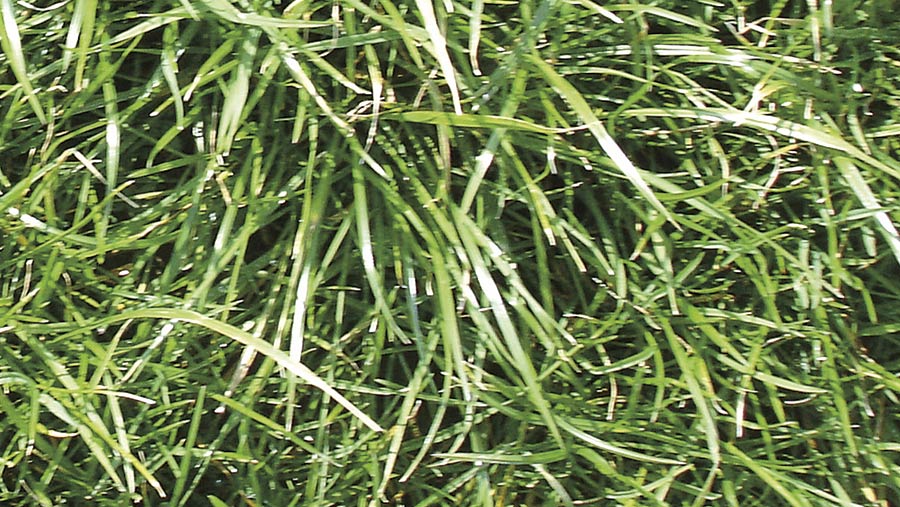Why farmers will pay heavily for not reseeding grassland
 © Tim Scrivener
© Tim Scrivener The lack of pasture rejuvenation of UK farms could mean farmers will pay a hefty price as they look to increase production from home-grown forage.
The amount of temporary grass, under five years old, has fallen by 18% in the past two years, according to Ian Misselbrook, grass seeds manager from Limagrain UK.
He says this indicates less grassland is being reseeded and the average age of leys is getting older.
See also: Farmers not making the most from forage, survey shows
He believes the prolonged downturn in milk prices and pressure on cashflows has possibly deterred any investment in grassland.
However, he warns it could carry a hefty price tag caused by productivity losses.
Reseeding a grass ley typically costs £620/ha (£250/acre) taking into account the cost of cultivations, seed, fertiliser, labour and machinery.
While some farmers may find this difficult to justify, Mr Misselbrook says it starts making sense when you look at the loss in productivity of the ley year-on-year, with added hidden costs where farmers need to make up energy deficits.

A one-year ley is more productive than older leys.
Productivity losses
A grass sward is at its most productive in year one and a typical reseed of a five-year-old ley will increase productivity by 35% to 50% depending on the condition of the ley being replaced, he explains.
AHDB Dairy data shows a two-year-old ley yielding 13.5t/ha at 12ME will drop to 11.2t/ha and 11.5ME by year five.
However, in year 11 yields will be almost half that of year two with energy levels down at 10.8ME.
“And if we look at some Niab data, we can see the year-on-year drop in yield and quality of a medium-term ley,” he adds.
“There is a hidden cost on many farms of making up this shortfall in energy – a cost that many producers don’t realise they could be saving if their grassland was more productive.”
The cost of making up for every deficits
The table below shows the dry matter yield and energy value of a five-year medium-term ley is estimated to be 47,820 MJ/ha less than it was in year one.
By year seven and eight these leys will have a shortfall in energy of about 9,000MJ/ha compared with a new ley.
“If we look to replace this energy value with wheat in year five, based on current prices of £140/t, the cost would be £568/ha.
“By year eight the cost would be almost double, at £1,134/ha.
“These costs show that the cost of a reseed is covered between years three and four for this medium-term ley.”
|
Typical feeding value and yield of a medium-term cutting ley (Niab data) and cost to replace the lost energy with feed wheat of 13.7ME, 86% DM and £140/t |
||||
|
Sward age |
Yield (kg/ha year) |
Average ME (MJ/kg DM) |
Lost energy (MJ/Ha) |
Cost to replace with feed wheat (£/ha) |
|
One year |
14,300 |
11.5 |
– |
|
|
Two years |
13,800 |
11.3 |
8,510 |
101 |
|
Three years |
13,100 |
11.2 |
17,730 |
211 |
|
Four years |
12,100 |
11 |
31,350 |
373 |
|
Five years |
10,900 |
10.7 |
47,820 |
568 |
|
Six years |
9,600 |
10.5 |
63,650 |
756 |
|
Seven years |
7,900 |
10.4 |
82,290 |
978 |
|
Eight years |
6,700 |
10.3 |
95,440 |
1,134 |
Mr Misselbrook advises farmers to assess their silage fields after two or three years and grazing ground at five years old.
“Look at the proportion of sown species.
“A new, medium-term ley sown with a quality mixture will have a ryegrass content generally above 90%.
“If this has fallen to below 60% then a reseed will be beneficial.
“The other 40% could well be the less productive meadow grasses and weeds, such as docks and chickweed,” he adds, noting that from experience grass leys will typically have a ryegrass content of 40% at eight years old and 10% by 10 years old, by which times their feed value is negligible.
Mr Misselbrook says farmers should carry out a cost-benefit analysis and see how much better off they could be by investing in their pasture.
Reseeding with a higher energy forage adds to the cost justification too.
“Producers replacing a concentrate of 12.5ME with a forage of 10ME will be likely to see a fall in milk yield, as opposed to those a high-quality grass that provides a high-quality forage of 12ME.”
Kingshay figures show that, on average, one-third of milk comes from forage with the top 25% nudging this up to nearly 50%.
“There is great potential for farmers to feed more forage and increase feed efficiency.
“But it is dependent on a reliable supply of highly productive grass. Reseeding is a vital – and cost-effective – part of this.”
